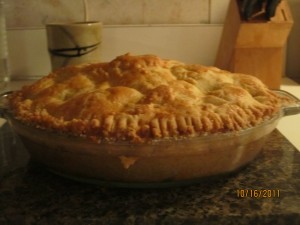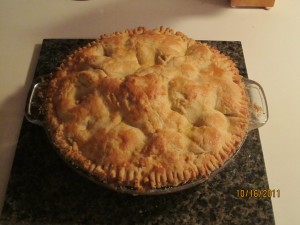Five years in to the gluten free diet, there wasn’t a whole lot of food I still missed. It has basically gotten to the point where feeling good is better than the meals I’m missing out on, but there was always the lingering sense of loss around two things: pizzas and sandwiches.
As far as gluten free pizza goes, I’ve had a little success in making my own recipe and in finding some local pizzerias with GF options. It isn’t quite the same since it costs twice as much money or effort than the traditionally cheap & easy pizza, but at least there was a choice.
However, finding a good sandwich has been quite a bit trickier. Or it was, anyway.
Jason’s Deli to the rescue
Jason’s Deli has been around town for a while, but it was never really one of my favorites. I generally prefer the sub-style sandwiches, and in my wheat eating days I would often choose quantity over quality. So back then, I didn’t think too highly of the attention to detail and wholesome ingredients that goes in to a Jason’s Deli sandwich, but I did always enjoy their catering at various events. It just seemed a little bit pricey for a regular meal.
Anyway, that opinion flew out the window when I found out they regularly carry gluten free bread. This isn’t just something the local branch does because some gluten-free employee pestered them, this is a commitment they’ve made to dietary diversity across all of their locations. And it fits right in to their insistence on pure & natural foods. Whether you’re trying to avoid artificial dies, gluten, or processed corn syrup, Jason’s Deli is looking out for you with some of the freshest and healthiest sandwich toppings around.
Expensive isn’t so expensive anymore…
Normally, buying a gluten-free version of something boils down to paying more for less food. Whether it is a small, personal pizza for $20 or nine cookies for $4, you can get whatever you want in a gluten-free version if you’re willing to shell out extra bucks.
Except at Jason’s, where you pay the regular price for a full-sized gluten-free sandwich.
Here’s the combo I recently enjoyed at Jason’s Deli for less than ten bucks:
- Roast beef
- Swiss
- Mayo
- Mustard
- Spinach greens
- Purple onions
- Oil & vinagerette
- A pickle
- Coca-cola (with free refills)
- and a Bag of Lay’s plain potato chips (that have always been my favorite)
Yeah, it was amazing. I cannot recommend it enough, especially if you love sandwiches as much as I do. Hell, I once took a job making subs after I graduated college, because the employee discount effectively added a whole bunch to my wage – and I was eating enough to make the job competitive with some entry-level corporate gigs. In retrospect though, I can see why I got so sick and miserable during that time frame.
Gluten free sandwiches from home
After the pleasant shock of a gluten-free Jason’s Deli sandwich, I had to learn some more. It turns out the bread they used is actually available in a lot of places. The brand is called Udi’s, and while I’d heard good things about it before I prematurely gave up on finding a good GF bread because of a few bad initial experiences.
It turns out my favorite local grocery store has loaves of this stuff in their freezer, so I picked one up today and now I’ve got sandwiches popping out of my own kitchen again for the first time in ages.
Are there downsides? Of course. A loaf of about 12 small pieces costs almost $5, and the bread itself is a little bit dry when compared to something fresh from the bakery. However, when you consider it is a gluten free bread that has traveled from Colorado to Florida, it really is pretty impressive.
Oh yeah, they also have some bagels and pizza crusts available, but I haven’t quite had a chance to check that out yet.
It just gets easier…
Right now, gluten free diets have become a bit of a trend. There might be a lot of people who don’t really need to go GF who are jumping on that bandwagon, but if you do have a bad intolerance you might as well take advantage of that popularity. Whether it is sandwiches at the corner deli, or passable gluten free breads in the grocery store freezer, there are now a lot of options for Celiac patients today that just weren’t there a few short years ago.
So, if you or someone you know is new to the gluten free diet, try to help them be patient and relaxed. As time goes on, more choices become available and recognizing sources of wheat contamination becomes easier. All in all, your health will continue to improve long after the burden of watching your ingredients has become second nature! And yes, there is a sandwich at the end of that long, dark, gluten-free tunnel! Come join us, it is actually a much nicer place to be than I ever would have imagined…


